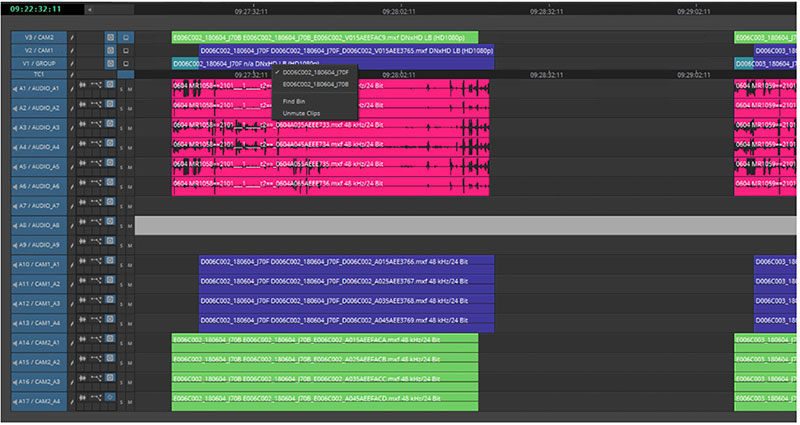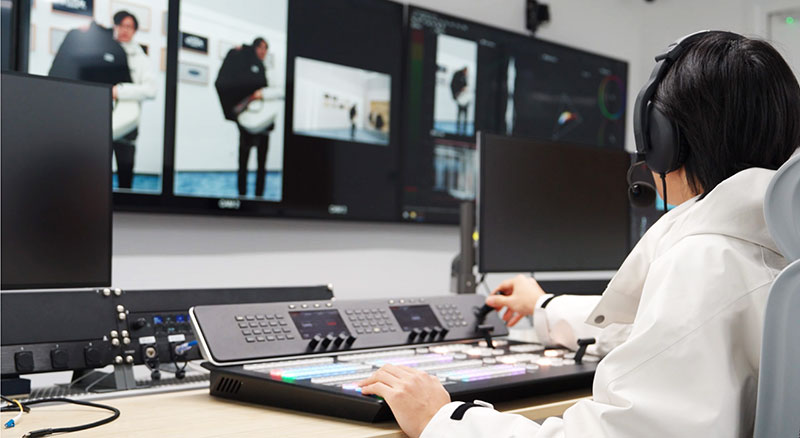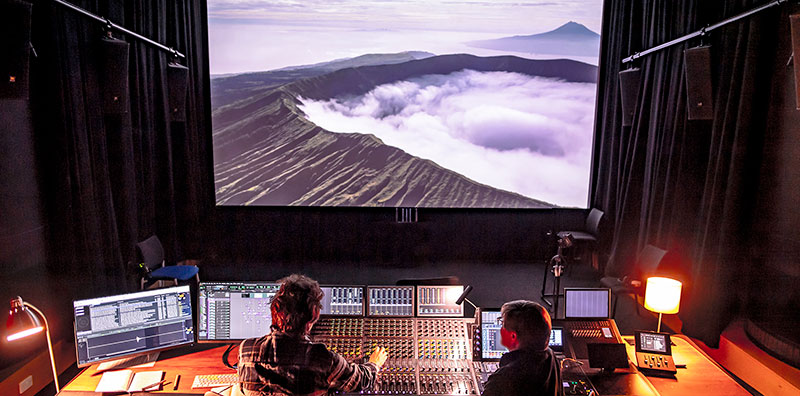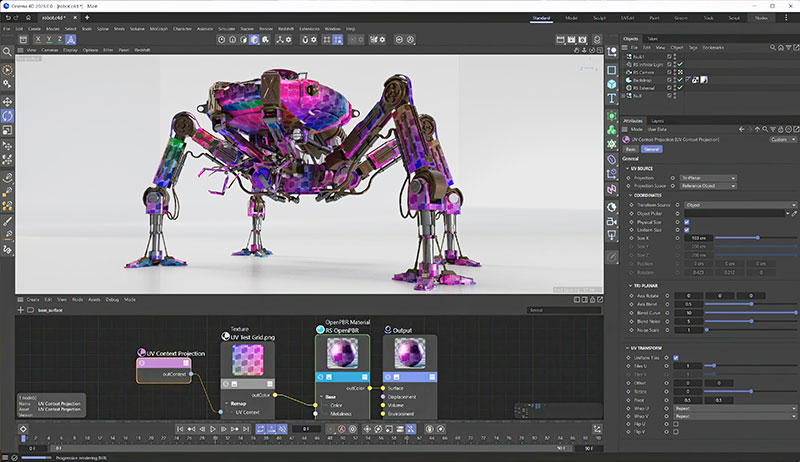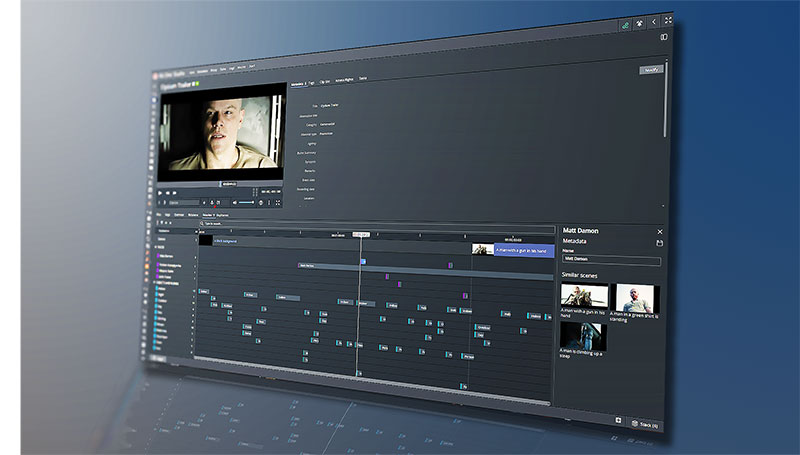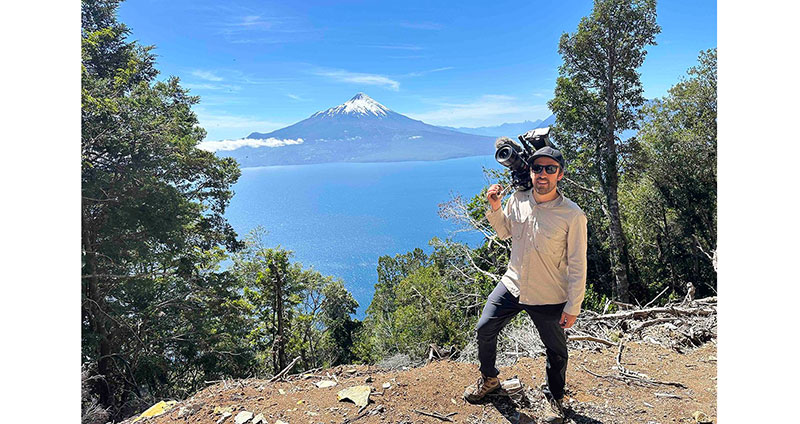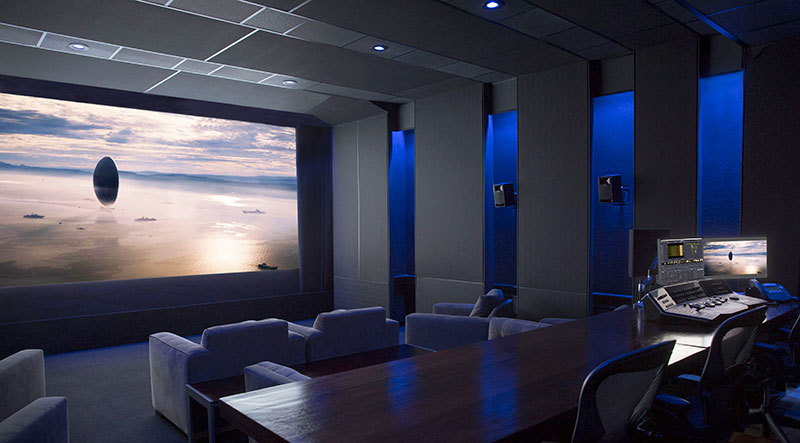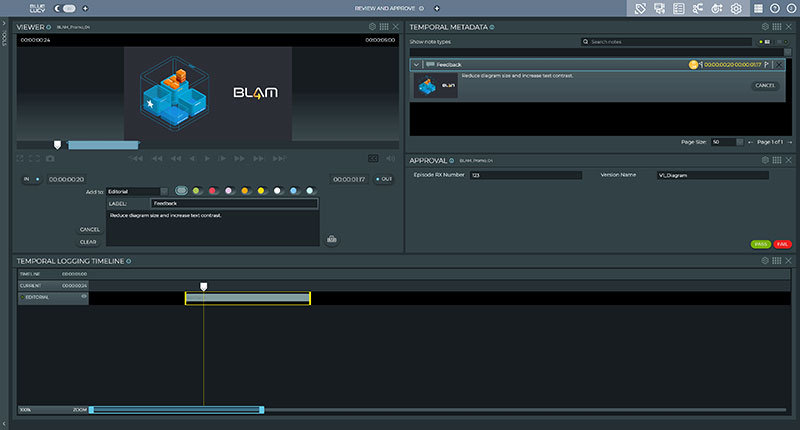Adobe Premiere Pro (beta), After Effects (beta) and Frame.io have a new set of updates that focus on saving time on everyday tasks – from searching for clips to managing HDR pipelines.
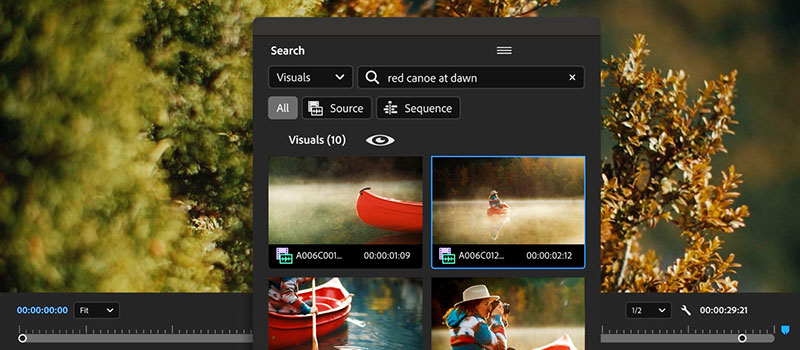
Adobe Premiere Pro (beta), After Effects (beta) and Frame.io have a new set of updates released in time to coincide with the 2025 Sundance Film Festival. The focus is on saving time for video professionals when carrying out common, everyday tasks. These include searching for ideal clips to suit specific situations, transcribing and translating footage, a faster cache for motion graphics playback, and managing HDR colour pipelines.
AI-powered Media Intelligence and New Search Panel
Although many editors develop their own methods for reviewing, logging and finding remembered shots or discovering new ones, the process is often slow and makes setting up timelines laborious.
Premiere Pro (beta) now has a new Media Intelligence AI engine and Search panel. The content of a project’s clips is automatically analysed, indexed and recognised, including objects and people, locations, camera angles and other features. In the new Search panel, editors can use natural language to find graphics, images or spoken words, as well as content that has been ingested with embedded metadata like shoot date or camera type – all at the same time.
Users can search footage with descriptive terms – like time of day, close up or long shots, choice of activity or objects, camera effects – and receive a collection of relevant material to scrub through or load in the Source monitor. Or you can search for a general topic and find related imagery, transcript references and embedded metadata with shoot location – all in one place.
Analysing and indexing takes place in the background and soon as media is added to a project. Media analysis is very quick and happens entirely on the user’s local system, making an internet connection unnecessary.
Caption Translation in Premiere Pro (beta)
Since the initial launch of Adobe’s Text-Based Editing workflow, the ability to remove pauses and detect filler words has been added to the functionality. The most recent addition is caption translation.
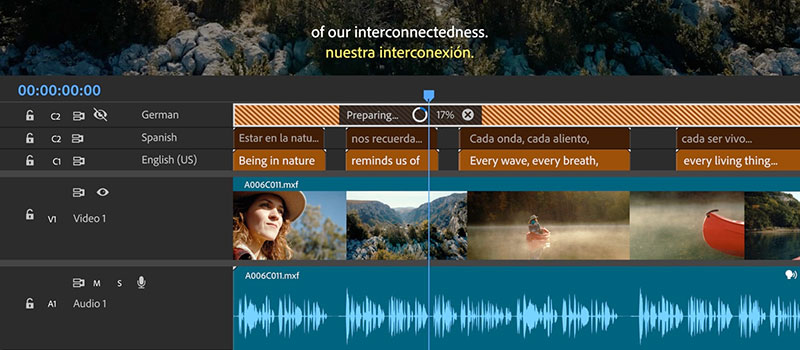
Captions have gained importance for accessibility and engagement on social media, where people expect to fully understand a new topic inside of a few seconds. Platforms interested in expanding their global audience can now generate fast, accurate translations in 17 languages. If required, multilingual caption tracks can be displayed at the same time. Editor can also use multilingual displays as assistance when editing captions in a foreign language.
Direct Playback in After Effects (beta)
Because speed has now become so important, performance improvements in After Effects (beta) now allow users to preview composites more effectively through a faster caching system. It uses both the computer’s RAM and any high-performance attached hard disks to preview and playback larger and more complex projects. This option makes motion design more interactive and responsive.
This gives users more than the amount of RAM built into the computers they are working on when playing back media, allowing older or lower spec desktops and laptops to cache very quickly and play back a full After Effects composition as soon as it is cached, without pausing for rendering.
HDR Monitoring
HDR monitoring is now also a part of After Effects (beta) due to upgraded video scopes that support PQ and HLG HDR video. Motion designers can now view HDR compositions accurately whether they are working on a laptop or using professional I/O hardware to send an HDR signal to a calibrated reference monitor. It’s as easy to work in HDR as it is to work in SDR with the new After Effects (beta) version.

Frame.io Camera to Cloud for Canon C80 and C400
Through a partnership with Canon, Adobe has formed an integration between the Frame.io Camera to Cloud (C2C) service and Canon’s C80 and C400 cameras. With a recent firmware update in December, users can now automatically upload proxy files directly from either of those cameras to Frame.io. This gives post-production teams and colleagues access to footage from anywhere within a few seconds of shooting. Premiere Pro also supports raw camera formats from these cameras, which means that the integration preserves image quality while it speeds up the workflow.
After sending proxy files to the cloud to start an edit, you can relink to the camera originals before your final delivery. This direct connection between production and post-production allows real-time collaboration to the extent that potential issues can be addressed before production wraps. Productions can avoid reshoots, for example, and have greater confidence that captured material is securely stored and accessible regardless of location.
As well as the camera, users will need a Frame.io account, a network connection and a six-digit pairing code. From there, video files can be uploaded to cloud storage within a few minutes.
Note that, if you are a Creative Cloud member, you can access the Premiere Pro (beta) and After Effects (beta) and can install these beta versions side-by-side with the current releases of Premiere Pro and After Effects.
Adobe at the Sundance Film Festival
The 2025 Sundance Festival is taking place from 23 January to 2 February. According to the annual Sundance Institute survey, 85 percent of this year’s entrants use Adobe applications, including Premiere Pro, After Effects, Photoshop, Frame.io and the Substance 3D Collection.

Fast motion graphics playback in After Effects (beta)
Premiere Pro was the most-used video editing software, with more than half of this year’s film productions choosing it as NLE. Opus, By Design, Train Dreams, Bunnylovr, The Abama Solution, Bucks County, USA and The Legendo of Ochi are some of the narrative features, documentaries and episodic series opening at the 2025 Sundance Film Festival that were cut on Premiere Pro.
Adobe Film & TV Fund
Also, the Adobe Film & TV Fund announced an additional $5M commitment to the Fund, bringing this to an $11M fund that has to date supported underrepresented creators and filmmakers in finding career opportunities on-screen and behind the camera. hree filmmakers who were supported through the Adobe Film & TV Fund grant to The Latinx House last year have films premiering at Sundance: María Gabriela Torres, editor of The Librarians, Isabel Castro, director of Selena y Los Dinos, and Mario Fierro, editor of Sweet Talkin' Guy.
The Adobe Film & TV Fund is partnering with Group Effort Initiative (GEI) to provide Adobe training courses for the next generation of filmmakers, editors and marketers that will be essential for corporate, creative and production jobs in film and television. GEI aims to provide education, training, mentorship and professional development to underrepresented communities in the entertainment industry. Through this partnership, Adobe and GEI will support mid-career advancement for diverse professionals through employer engagement, career outcome analysis and strategy development.
To help support the Los Angeles creative communities impacted by the recent wildfires, the Adobe Foundation has made a $1 million charitable grant across the California Community Foundation: Wildfire Recovery Fund and Entertainment Community Fund. www.adobe.com



